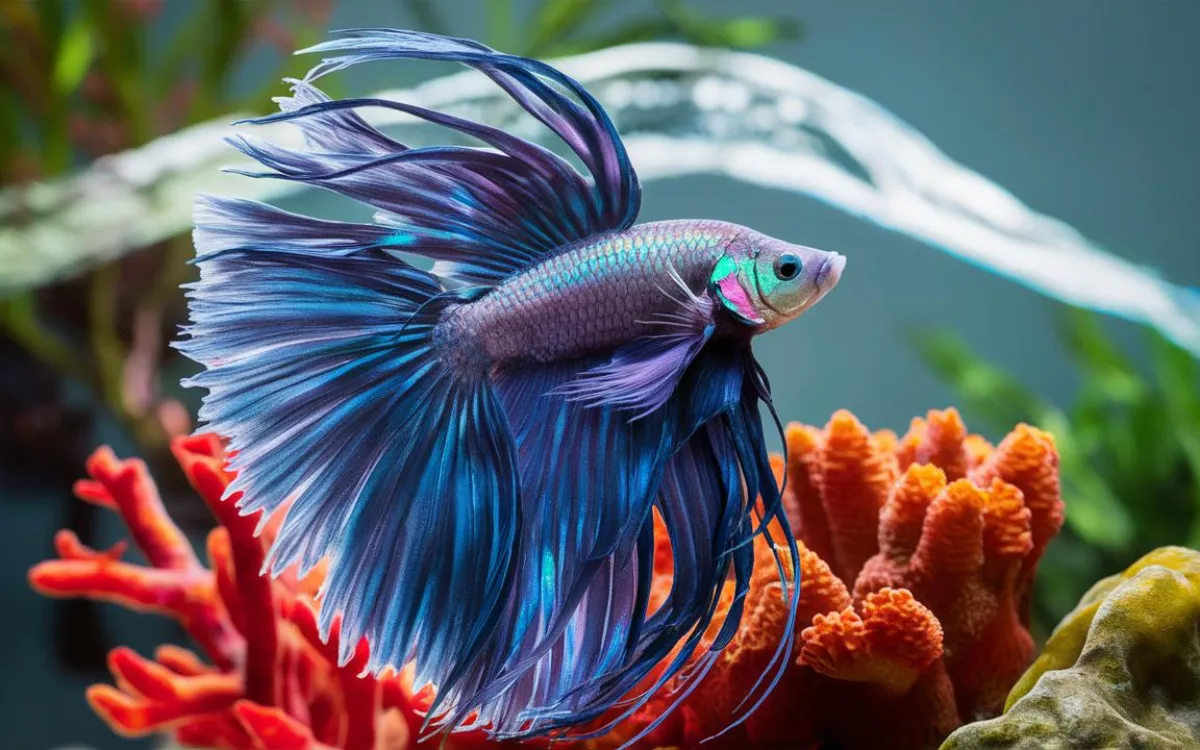Curious about the size of female betta fish? While they’re known for their vibrant colors and flowing fins, their size can vary depending on factors like genetics and care. Unlike their male counterparts, female bettas don’t typically grow as large, but they still have a unique charm and personality.
Let’s explore the typical size range of female bettas and factors that can influence their growth. Let’s find out with Betta Fish Information now!
How Big Do Female Betta Fish Get?
Female Betta fish, also known as “betta females,” come in a range of sizes, with variations depending on genetics and breeding. Here’s a breakdown of typical sizes:
- Standard Female Betta Fish: Adult female Betta fish typically reach a length of about 2 to 2.5 inches (5 to 6.5 centimeters), excluding their finnage. This means their body length, without the fins, falls within this range.
- Giant Female Betta Fish: Giant female Betta fish are larger than their standard counterparts. They can reach a length of about 2.5 to 3 inches (6.5 to 7.5 centimeters), excluding their finnage.
Important Considerations:
It’s important to note that these size measurements exclude the fish’s finnage, which can add significantly to their overall appearance.
While these are average sizes, individual fish can vary depending on genetics and breeding. Some female Betta fish might be slightly smaller or larger than the typical ranges.
Creating The Perfect Habitat For Female Betta Fish

A happy and healthy female Betta fish thrives in a well-maintained aquarium that meets their specific needs. Here’s a breakdown of essential elements to create the ideal environment:
Tank Size
Minimum: A 5-gallon tank is the minimum recommended size for a female Betta fish, providing ample swimming space and helping to maintain stable water conditions.
Ideal: A 10-gallon tank is even better, offering more room for exploration and reducing stress.
Lighting
LED Lights: Energy-efficient and producing minimal heat, LED lights are a popular choice. They come in various colors, allowing you to enhance the vibrant colors of your Betta fish.
Full Spectrum Lights: These lights mimic natural sunlight, promoting the growth of live aquarium plants if you choose to include them in your tank.
Submersible Lights: Some LED lights are submersible, creating unique underwater lighting effects.
Plants
Benefits: Female Betta fish thrive in tanks with plenty of plants, which provide hiding spots, reduce stress, and enhance the natural beauty of the aquarium.
Recommended Plants: Consider options like Java Fern, Anubias, Amazon Sword, Cryptocoryne, Dwarf Water Lettuce, Java Moss, Hornwort, Water Sprite, Duckweed, and Vallisneria.
Water Parameter Kit
Regularly monitoring your female Betta fish’s water quality is essential for their well-being. A water parameter kit allows you to measure key indicators, ensuring a healthy environment for your aquatic companion. Here’s a breakdown of the crucial parameters to track:
Regular Monitoring: Measure water quality weekly to ensure a healthy environment for your Betta fish. Early detection of imbalances can prevent problems from escalating.
Key Parameters:
Maintaining optimal water parameters is crucial for a healthy Betta fish. The ideal pH range is 6.5 to 7.5, temperature should be stable between 78°F and 80°F, and ammonia and nitrite levels should be 0 ppm. Nitrate should be kept below 20 ppm.
Hardness and alkalinity should be within a specific range, and tap water should always be treated with a conditioner to remove chlorine and chloramines. Finally, ensure adequate aeration and surface agitation to maintain sufficient dissolved oxygen levels.
Female Betta Fish Tank Maintenance
Maintaining a healthy Betta fish tank requires regular cleaning and upkeep. This includes regular water changes, monitoring water parameters, cleaning the filter, substrate, and decorations, and quarantining new additions. By following these steps, you can create a clean and healthy environment for your female Betta fish, allowing them to thrive and showcase their vibrant colors.
Frequently Asked Questions About Female Bettas
Do female bettas need a heater?
Female bettas need a heater if your home’s temperature fluctuates, especially during colder months. The ideal water temperature for a betta is 78-82 degrees Fahrenheit, and a heater ensures a stable environment, reducing stress and illness.
If your home consistently maintains that temperature range, a heater might not be necessary. However, it’s generally recommended to use a heater for a consistent and comfortable environment for your betta.
Is It Normal When My Female Betta Start Chasing Each Other?
It’s perfectly normal for female bettas to be a little feisty! They’re known for their lively antics and playful behavior, often chasing each other as they establish their pecking order.
While usually harmless, it’s important to provide plenty of hiding spots and plants in their tank for quick getaways. Keep a watchful eye on their interactions, and have a backup tank ready just in case things escalate and they become more aggressive.
Can female bettas live in small tanks?
While female bettas can technically live in small tanks, it’s not ideal and can negatively impact their health and well-being. Smaller tanks restrict their movement, make water quality harder to maintain, and offer less space for enrichment. The ideal tank size is at least 5 gallons.
However, if you’re limited to a smaller tank, you can still provide a decent environment by performing frequent water changes, using a proper filter, and providing plenty of hiding spots.
In conclusion, female betta fish are a delightful addition to any aquarium, offering vibrant colors and graceful personalities. While they may not reach the impressive sizes of their male counterparts, they still possess a captivating charm and can thrive in smaller tanks. By providing a proper diet, a stable environment, and a spacious tank, you can ensure your female betta reaches her full potential and enjoys a long, healthy life. Remember, a happy and healthy betta is a beautiful betta!

Related Posts
Platinum Butterfly Koi: A Stunning Addition to Your Pond
What Are The Most Expensive Betta Fish? Factors Influencing
Rare Beautiful Betta Fish: Types, Care & Where to Find Them